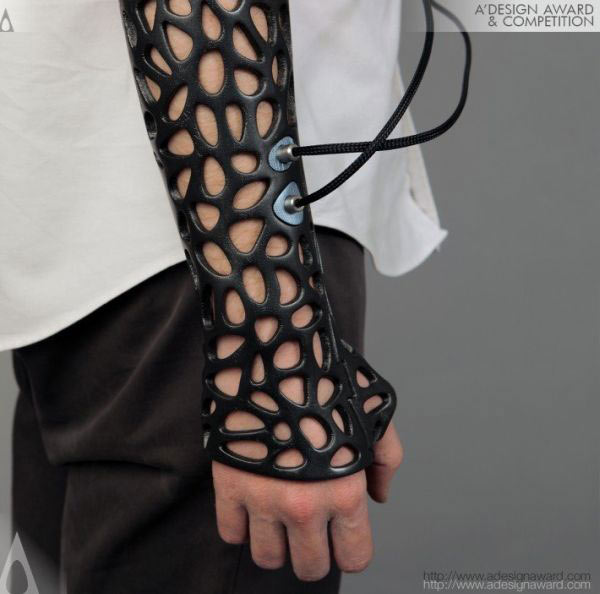
In the near future, 3D orthopedic cases will replace the traditional plaster bandages, making a revolution in traumatology. This way of treatment includes ultrasound technology that significantly accelerates the healing process.
Despite medical advance in almost all areas, we continue to treat fractures using plaster cases, as our ancestors did three hundred years ago. Traumatology has not invented anything new over such a huge time. However, Turkish students offered their own version of the future orthopedic case, which actually has nothing to do with plaster. These are 3D-printed devices for the fixation of broken bones, made of especially strong material, resembling a rubber coated plastic. The main difference from plaster is the plurality of holes which are necessary for the ventilation of the skin.
These holes do not reduce the strength of the device in any way. To accelerate the healing process this unique plaster uses ultrasound, which should be connected for only 20 minutes a day. Lipus stimulator system allegedly increases the healing rate by 80%.
According to inventor Denis Karasahin, traditional plaster aggravates skin ventilation in favor of the strength of structure. As a result, we are constantly sweating, which causes itching and very bad smell of the skin. Moreover, plaster itself is quite heavy, uncomfortable and unpleasant for patients. The technique involves scanning the limb on the computer, and then printing a 3D-bandage, just to follow the contours of the patient’s arm or leg. Vents are added in the algorithmic procedure.
